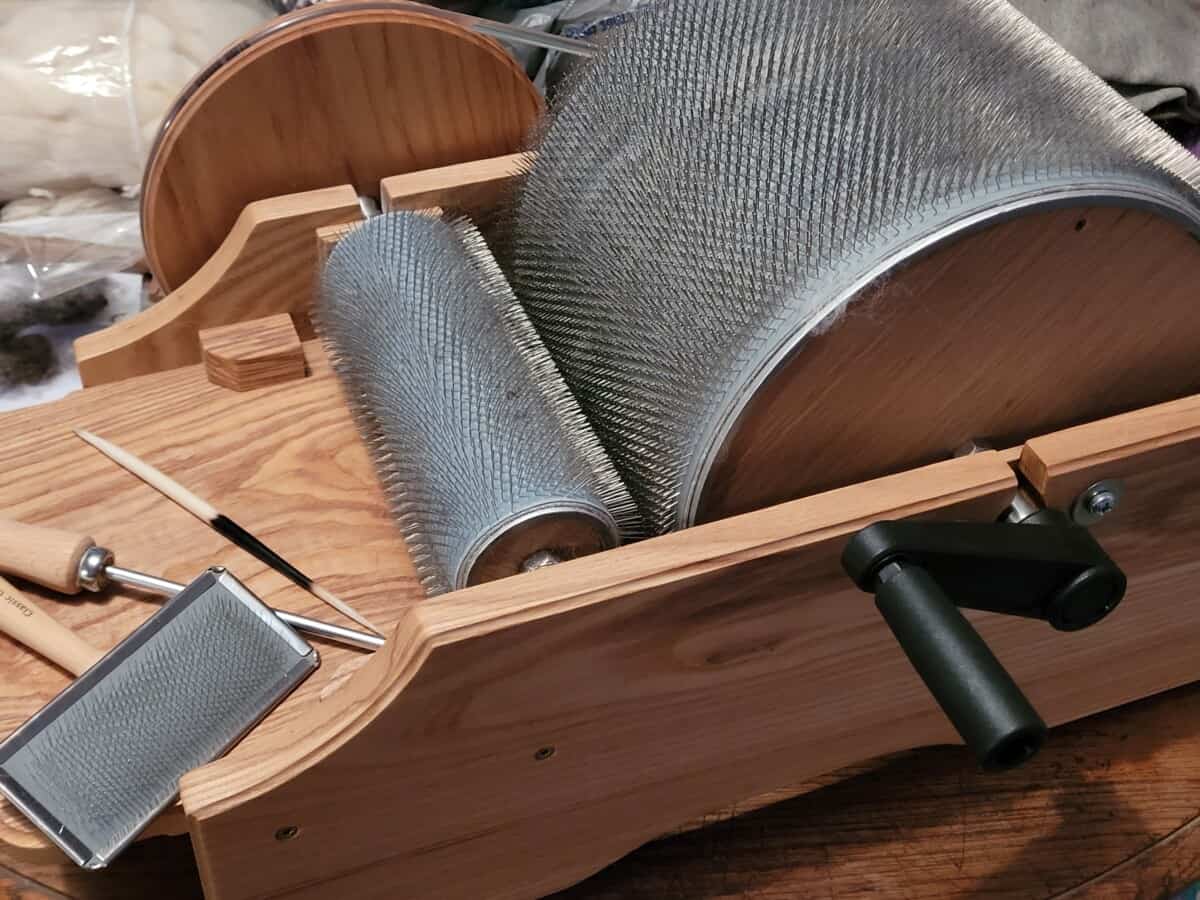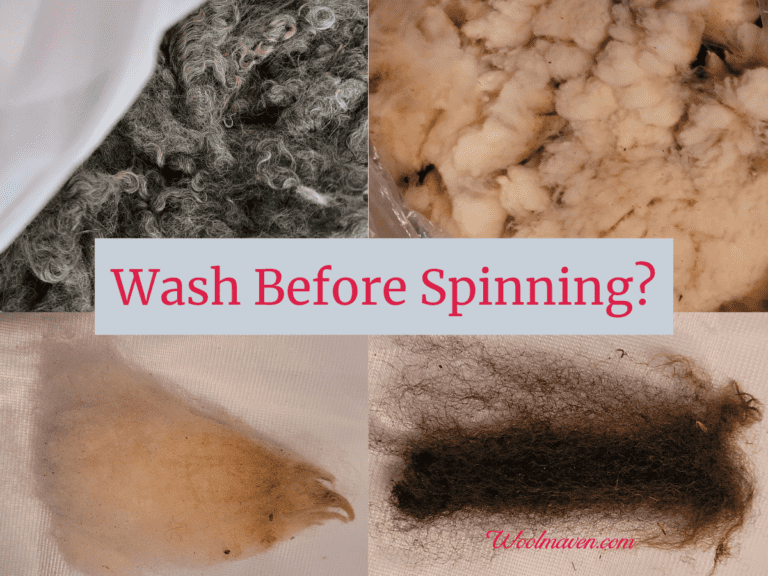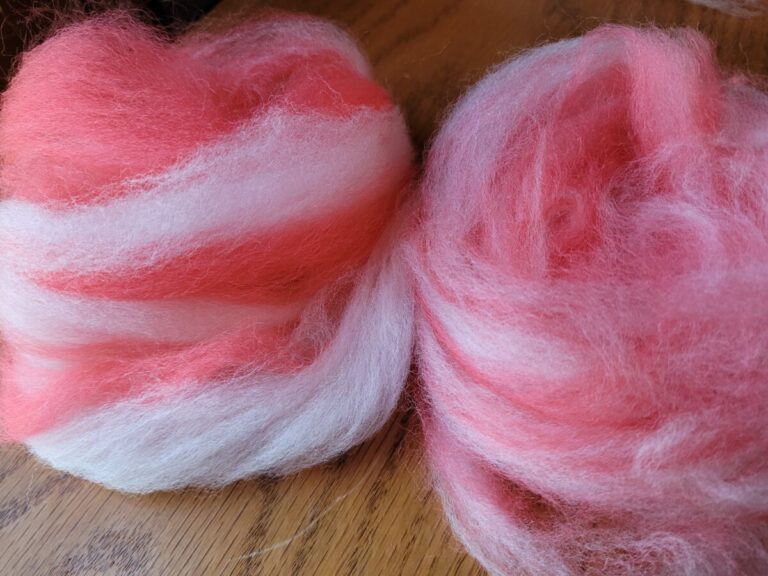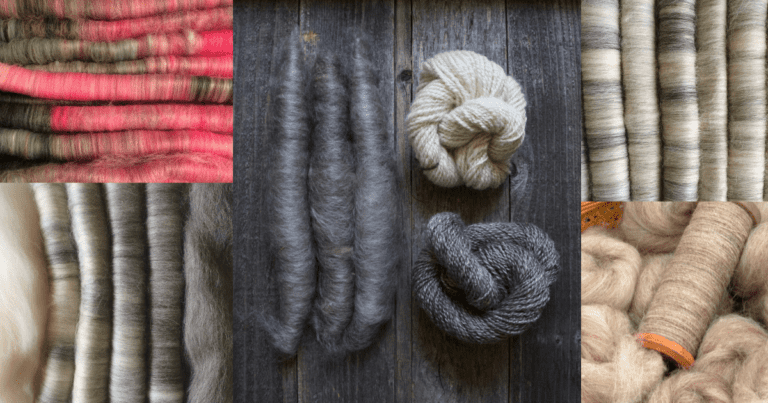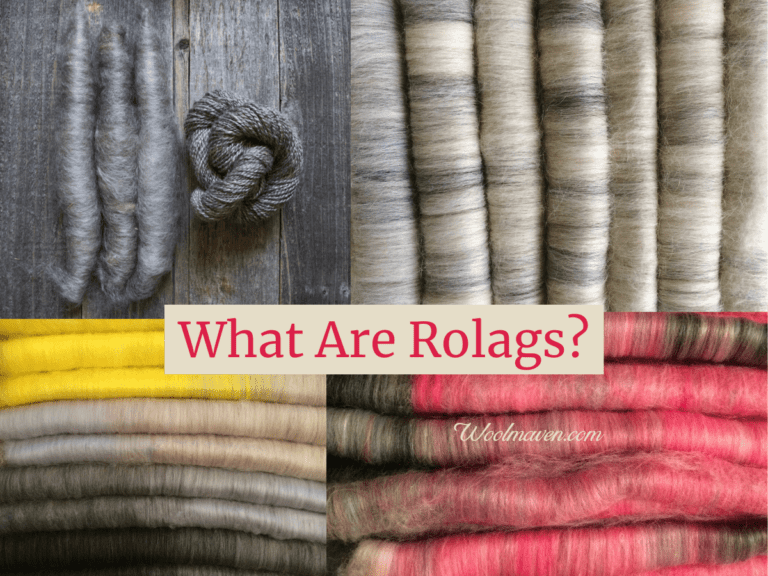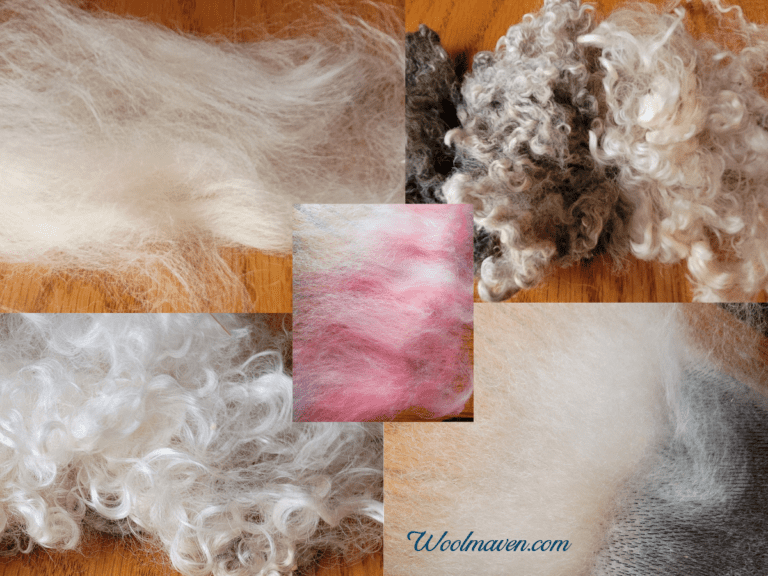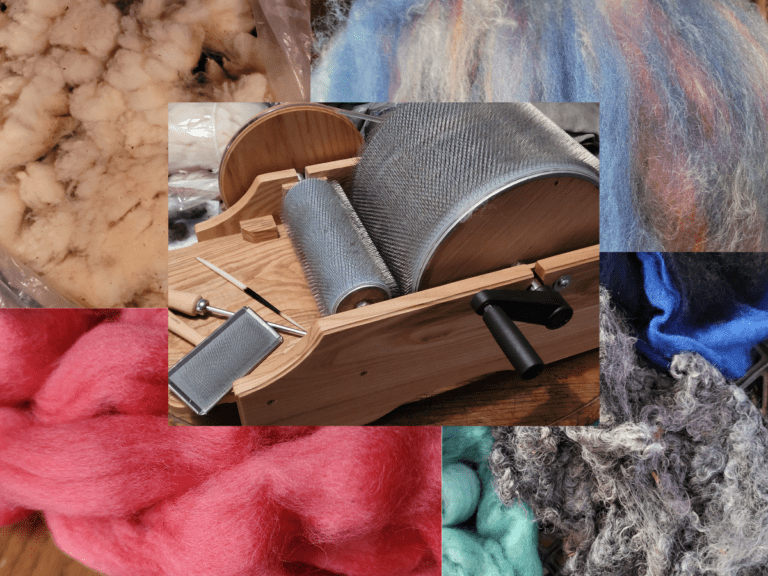Is A Drum Carder Worth It?
Are you considering getting a drum carder? Drum carders are definitely a time saver, especially compared to those hand carders or combs you are using now!
But, drum carders are also pricey! Should you get a drum carder for your fiber preparation or are you really just as well off with the cards or combs you have?
In short, are drum carders really worth it?
Drum carders will save significant time in fiber preparation and increase your fiber preparation options. However, drum carders are more expensive than hand carders or wool combs and are challenging to use with smaller amounts of fiber.
| Carder characteristic | Drum carder | Hand cards |
| Initial cost | higher | lower |
| Volume of fiber per batt | higher | lower |
| Time to prep fiber for entire project | fast | slow |
| Ease of use | easy | fairly easy |
| Consistent fiber for entire project | easier | harder |
| Small test batches of fiber | harder | easier |
The reason hand carders are listed as “fairly easy” in ease of use is that they are easy to use after you have practiced the correct way to use them, whereas you get good results immediately with a drum carder.
Pros And Cons Of Drum Carders vs Hand Carders gets into the good and not so good of using each and helps you figure out which carder is best suited to your needs.
This post contains affiliate links, which means I receive commissions if you choose to purchase through links I provide (at no extra cost to you).
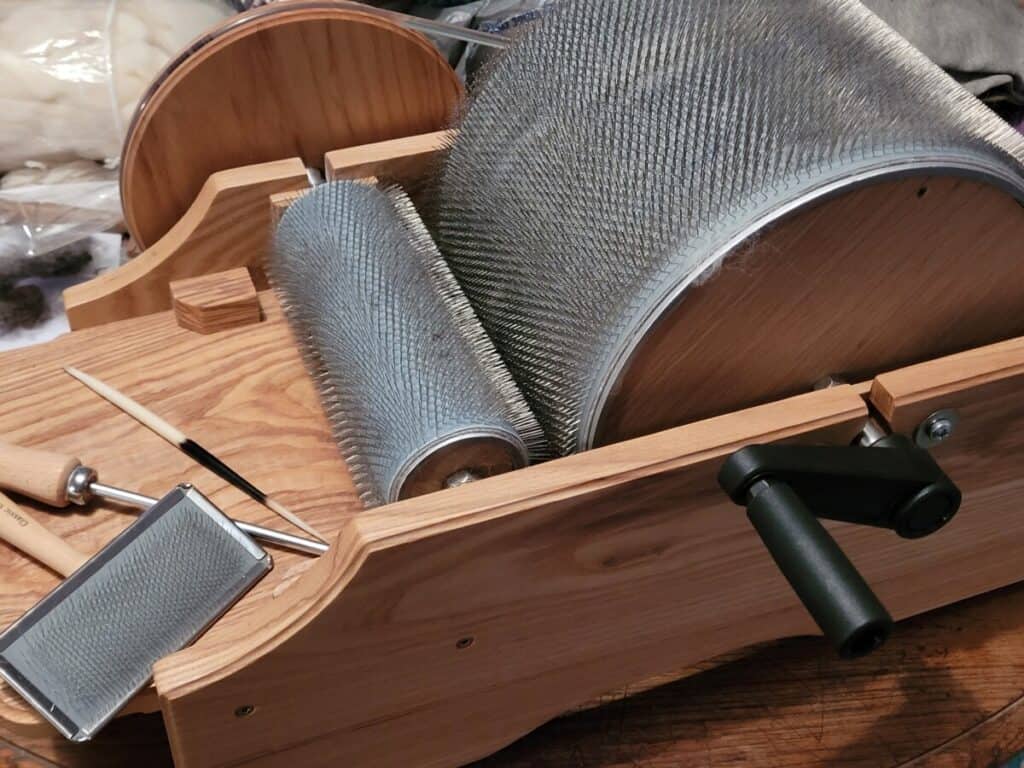
Drum carders cost more than hand carders or combs
I would guess price to be the biggest obstacle to getting a drum carder, more specifically to answering the question of worth, so we’ll go here first.
Drum carders are more expensive than hand cards or combs, by a substantial amount, and, of course, this cost is paid upfront, not as you go.
Drum carders are about 10x the cost of hand cards and 4-5x the cost of combs.
There are a variety of drum carders available to purchase, the main variations being drum size, carding cloth and hand crank or motorized, so take this into account when you are pricing drum carders, as well.
The lower priced drum carders are more in the $550-590 range, which are lower priced since they make smaller batts, which is fine if that’s what you want or need.
The standard size drum carders will be more in the $720-750 range and the XL or wide drum carders, which make larger batts, will be in the $800-950 range.
Drum carder alternative
You have somewhat of a drum carder alternative in the blending board, which will cost you anywhere from $165-245. You could also make your own.
A blending board is a piece of carding cloth that is put on a flat wood surface, like a cutting board, and is used to blend fibers.
Blending boards would be fine for anyone doing smaller amounts of fiber blending as long as you are working with prepared fibers.
The reason I write “somewhat of an alternative” is that a blending board does not have all of the functionality of a drum carder.
It would be able to replace some of the blending, but that’s it. If you need any of the carding as well as the blending, a blending board won’t do enough for you.
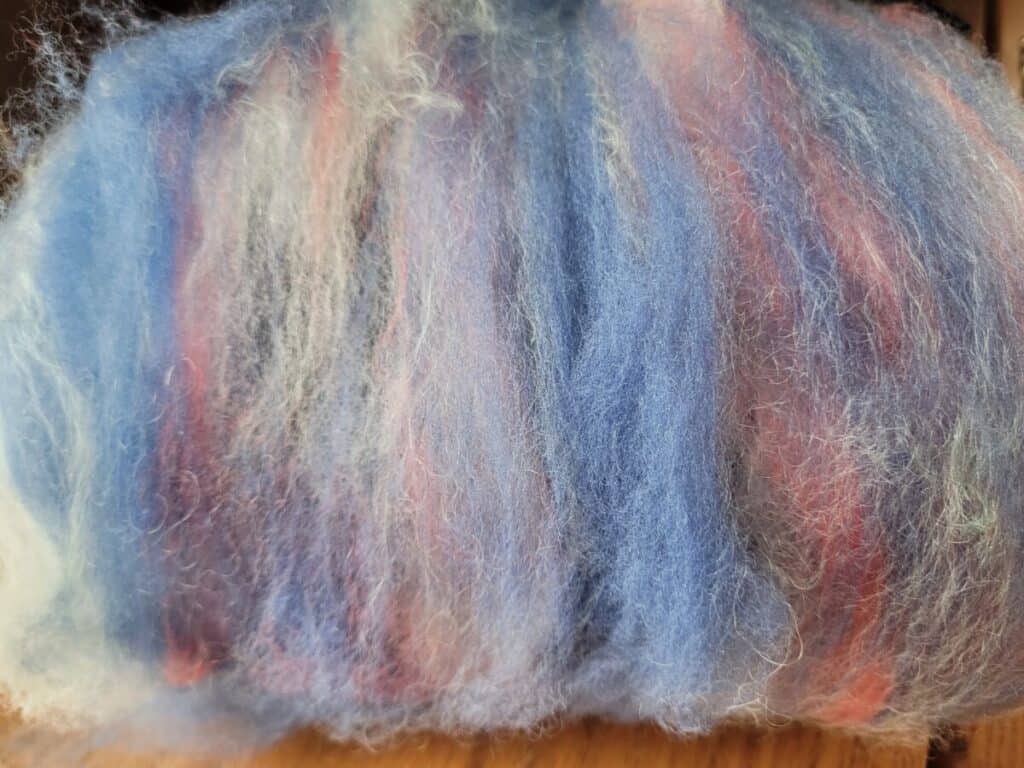
Drum carders are ideal for some handspinners
Drum carders are going to be overkill folks who really don’t process much fiber or love to use the hand cards or combs.
Drum carders are ideal for handspinners who:
- process your own fleeces
- need to process fiber more quickly than they can with cards or combs
- wants to blend differing fibers, especially fibers of different lengths
- dye fibers then custom blend batts
- want to make minimal batts for entire project
If you process a fair amount of wool, dye wool or want to blend batts, take a look at the Ashford Drum Carder. You’ll be glad you did!
Process your own fleeces
If you process your own fleeces (you take the wool to ready to spin form), a drum carder will help you get your processing done much more quickly.
Getting your fleece ready by picking out the debris and, most likely, washing is just the beginning, then comes the carding and that’s going to take a while!
You can prepare fleeces more quickly when you take advantage of a drum carder, rather than prepping all that wool with hand carders!
7 Best Places To Get Wool For Handspinning gives you some tips on how to source wool for your next project!
Tight on time
If you are tight on time and you’d really like to spend more of your spinning time, actually spinning, rather than on fiber preparation, a drum carder can make that happen for you.
It is crazy how fast you can make a few new batts to spin, actually I’ve done more carding than spinning.
I’m looking at three batts now that I have ready yet haven’t spun, despite doing quite a bit of spinning lately!
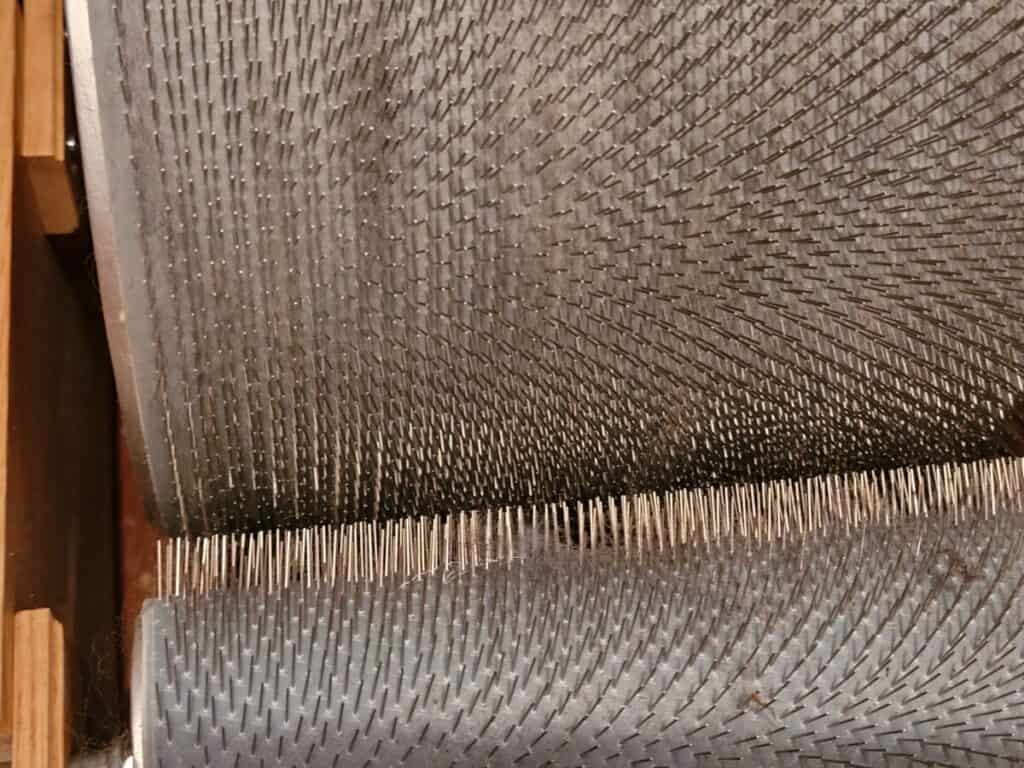
Mix fibers of different lengths
Here is where drum carders really shine, as far as messing around with your spinning fibers and being creative, using your drum carder on fibers of different lengths.
I can put pretty much whatever I want to, length wise, on the drum carder and it will mix right in with the rest of the fiber, nice!
Some folks prefer to use a hackle or combs to blend fibers, but those have a few limitations.
While I enjoy using a hackle for blending, it’s not a great option when you have fibers of different lengths that you are trying to put together.
Hackles and combs automatically leave behind the shorter fibers, whether it’s the shorter of the fibers you put on or fibers that are too short to work with, both get sorted to last.
For example, if you have a 5 inch wool and a 3 inch wool on the hackle together, the 5 inch will all come off first then the 3 inch will be left to come off last.
That’s not very blended!
The way that a drum carder works, fiber length is less of an issue here, both shorter and longer fibers can be mixed fairly evenly into the same batt.
Dye wool then blend
If you like to dye wool then blend it, a drum carder would be golden for you!
After you dye your fiber, you’ll want to be able to separate it out into spinnable form, and if you have a decent amount of it, that is drum carder territory.
Of course, you could prepare your dyed wool on hand cards! Nothing wrong with carding by hand.
If you want to get your fiber carded significantly faster, go with a drum carder.
Make minimum number of batts
If you want to use the same fiber preparation for your entire spinning project, the less times you make the fiber batt, by hand or on the drum, the more likely they are to be similar.
So, if you are trying to hand card enough of a nice gradient wool batt for a hat or mittens, you’ll have to make scads of little batts from your hand carders.
Or, you could make one big one with your drum carder and have your fiber source be consistent for the entire project.
If you are not doing anything too crazy, for instance just carding some dyed wool, no blends or gradients, then hand cards will do just as well as a drum carder if you are willing and happy to put in the time.
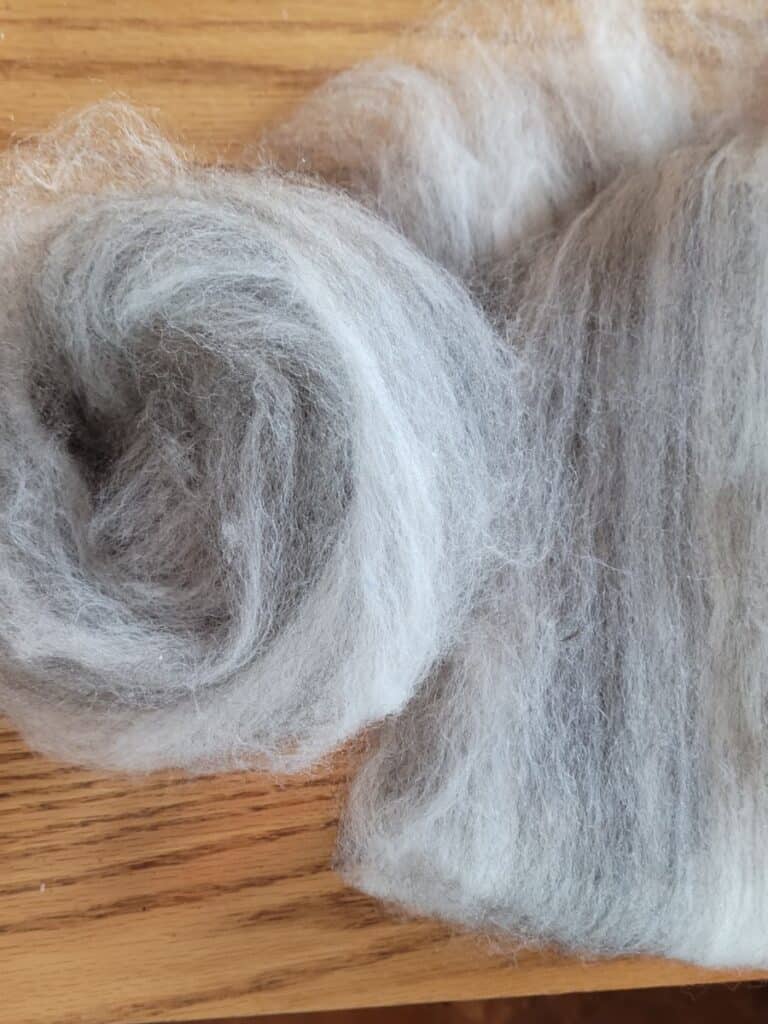
Drum carders are easy to use
The final positive for drum carders is that they are easy to use as soon as you get them. This is one of the main highlights of the Ashford Drum Carder, ease of set up and use.
There really isn’t a learning curve to carding with your drum carder, you just get started!
As long as you put in small amounts of fiber at a time, making a batt on a drum carder is easy for anyone who can turn the handle.
With a bit of practice and experience, you’ll expand your drum carding skills and results, but getting a batt of well carded wool your first try is likely.
Drum carders are not worth it for everyone
As great as drum carders are, they are not going to be worth the expense for everyone.
Drum carders may not be worth the cost to you if you:
- love to spin with the color and fiber blend choices that you can buy
- enjoy hand carding or combing all of your fiber
- process very small amounts of fiber
- want to spin true worsted yarn
Love to spin mill choice color or fibers
To me, one of the main benefits of a drum carder is that now I have complete control over the fibers that go into my batt.
Everything I make is custom created to my preferences and I love that idea!
How about you?
Are you happy with the combed top that you can get at your favorite fiber supply shop? Do you enjoy the color selection and blends that you find already?
If so, getting a drum carder is not going to be a big deal for you until you decide to do more with custom fiber blends or process more of your own wool.
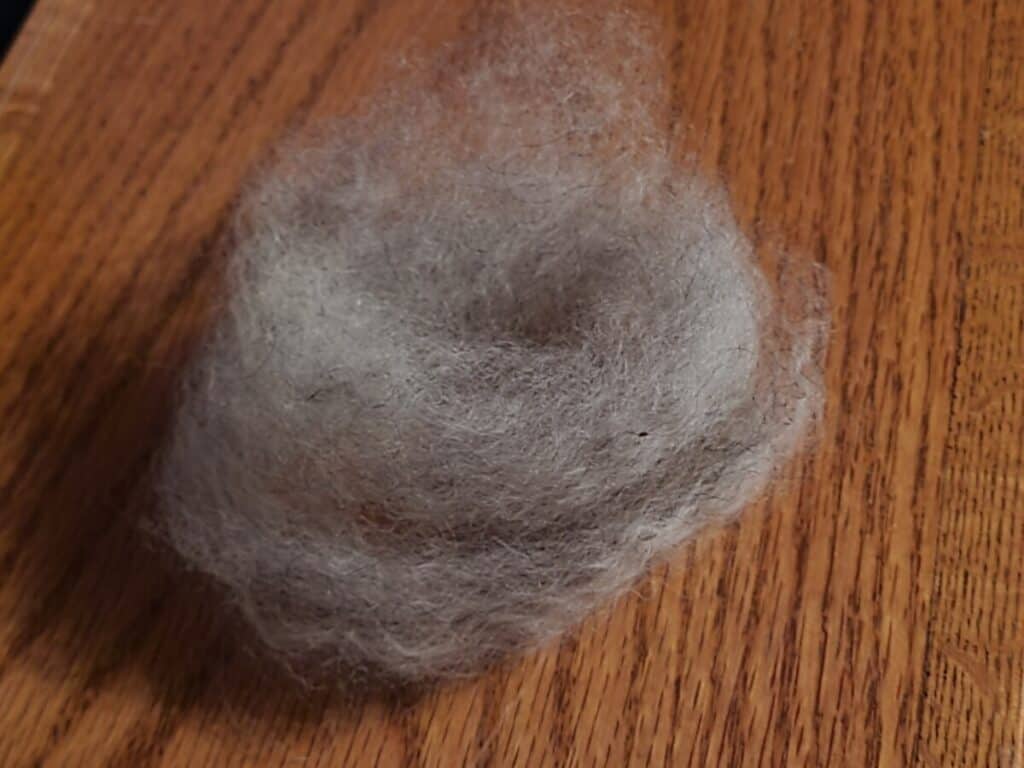
Working with this small amount of fiber on a drum carder would have been frustrating.
Love to hand card or comb
If you love to hand card or comb your fiber, then keep after it and be happy!
Getting a drum carder will fast track your carding, anyone who loves the process of hand carding is less likely to get the same satisfaction out of a drum carder.
Process small amounts of fiber
If you process a small amount of fiber then a drum carder is probably not for you!
Not only will it seemingly be a waste of your money, it will be harder to work with! A drum carder is made to work with a larger amount of fiber.
Small amounts of fiber tend to be a chore to doff (get off the carder) since the fiber in the batt will be spread too thin to hold together.
If you just fill your hand cards or combs two or three times then you are done, you’ll be frustrated putting that amount of fiber on a drum carder, it’s too little.
Want to spin true worsted yarn
The final reason that drum carders may not be worth it to you is if you want to spin a true worsted yarn and never venture into anything else.
The reason a drum carder won’t work for true worsted is that true worsted requires a combed preparation, this is a carder, which is different.
This is a small distinction and most folks would just use the drum carder and get to spinning!
If you want to be precise, a true worsted must be made from combed fibers not carded fibers, so this is the wrong preparation method for your target yarn.
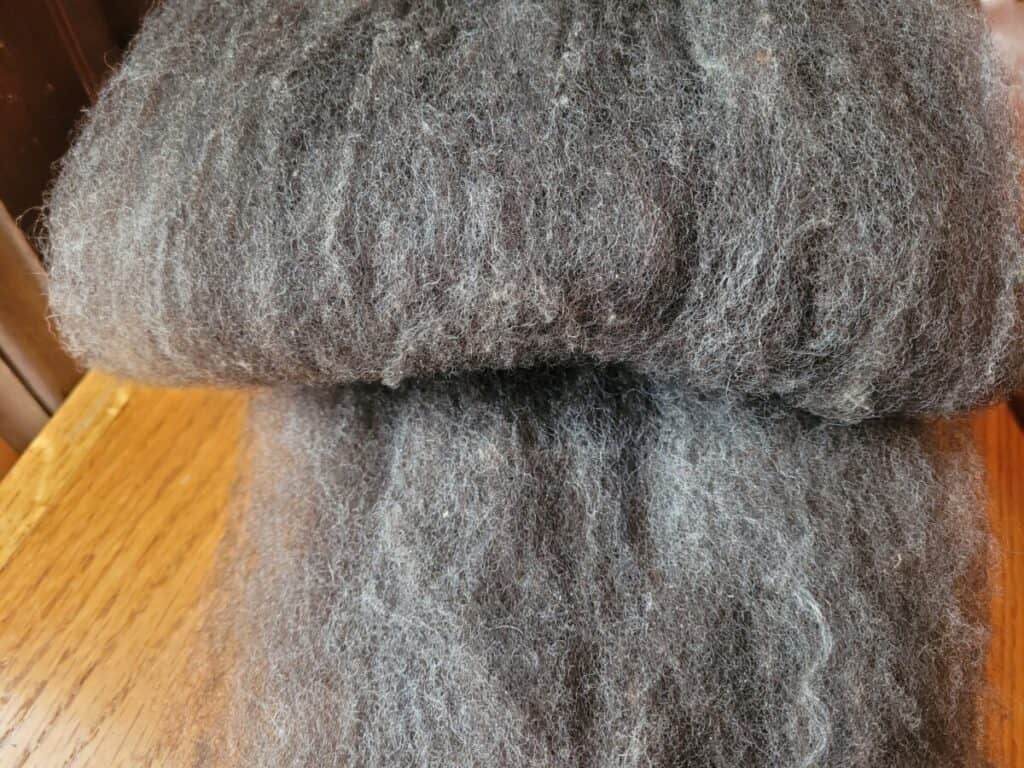
My drum carder
I have tried to stay unbiased through out this article, but not any more! Here’s my opinion on drum carders: get one!
I love my drum carder.
I just got it a few weeks ago and it has revolutionized my spinning, no joke! I used the word revolutionized on purpose, it’s truly that big of a difference.
I can make all of the things I see and think, wow, that’s neat, I could make a roving like that! I can and do nearly everyday!
Or I get an interesting idea and see how it goes and how it suits me, cool things like fun mixes or interesting colorways.
Right now I’m experimenting with kid mohair, it’s fun to work with and I love to make wool and mohair blends on the drum carder!
Without the drum carder, I can’t say that I would have given mohair much of a thought, yet, now I really get a kick out of using it.
My latest favorite thing to do is to add a bit of surprise luster or a color pop, almost like milder angelina, to a yarn with a handful of dyed mohair locks.
I say my latest favorite, because I play around with one idea then move to another, all possible with a bit of fiber, some dye and my drum carder.
I have to admit, I was feeling a bit splurgy (is that even a real word?) when I bought it, which is a rarity for me, but I’m glad I did.
If you are on the fence and can’t decide what to do with your mad money, get the drum carder, it will open up a world of fiber opportunities for you!
Wondering how to pick a drum carder? Read Tips on Selecting a Carder by The Woolery.

